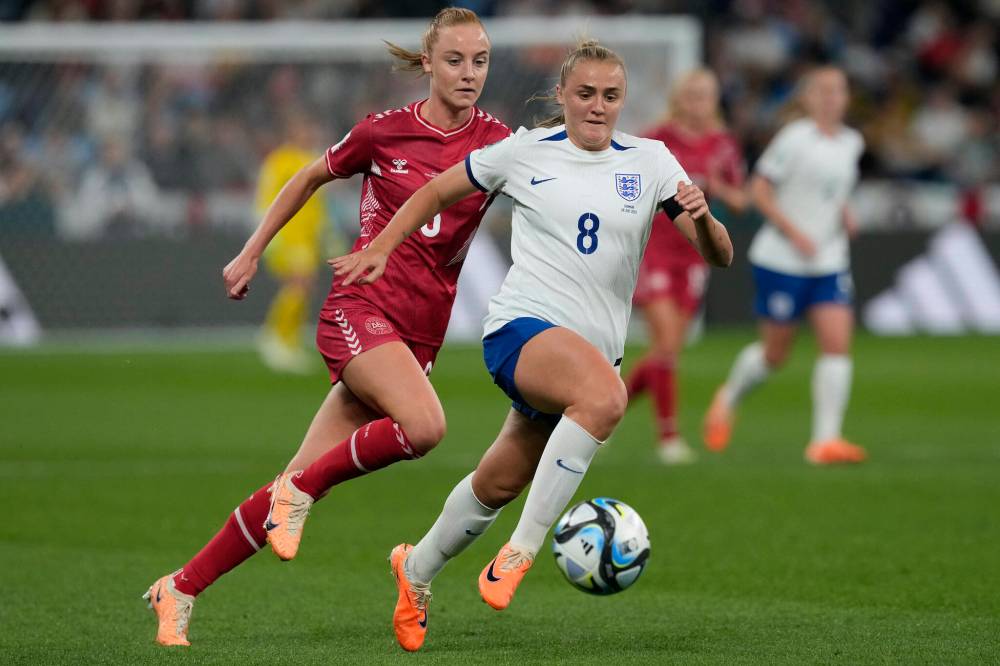Canada quickly becoming irrelevant
Women’s soccer can only prosper with a strong domestic league and better resources
Advertisement
Read this article for free:
or
Already have an account? Log in here »
To continue reading, please subscribe:
Monthly Digital Subscription
$1 per week for 24 weeks*
- Enjoy unlimited reading on winnipegfreepress.com
- Read the E-Edition, our digital replica newspaper
- Access News Break, our award-winning app
- Play interactive puzzles
*Billed as $4.00 plus GST every four weeks. After 24 weeks, price increases to the regular rate of $19.00 plus GST every four weeks. Offer available to new and qualified returning subscribers only. Cancel any time.
Monthly Digital Subscription
$4.75/week*
- Enjoy unlimited reading on winnipegfreepress.com
- Read the E-Edition, our digital replica newspaper
- Access News Break, our award-winning app
- Play interactive puzzles
*Billed as $19 plus GST every four weeks. Cancel any time.
To continue reading, please subscribe:
Add Free Press access to your Brandon Sun subscription for only an additional
$1 for the first 4 weeks*
*Your next subscription payment will increase by $1.00 and you will be charged $16.99 plus GST for four weeks. After four weeks, your payment will increase to $23.99 plus GST every four weeks.
Read unlimited articles for free today:
or
Already have an account? Log in here »
Hey there, time traveller!
This article was published 11/08/2023 (805 days ago), so information in it may no longer be current.
Speaking plainly in the moments following Canada’s group stage departure from the Women’s World Cup, captain Christine Sinclair remarked that the national team was in danger of being matched, and even surpassed, by rival programs.
It would have been a prophetic statement, had it been made five or six years ago.
Sinclair’s qualifier, “if things don’t change,” — a deserved dig at this country’s soccer governance — while part of the picture, doesn’t tell the whole story. Her other observation, that “there’s 23 players out there… and we didn’t get it done,” might better sum up what we’ve so far seen in Australia and New Zealand.

MARK BAKER / THE ASSOCIATED PRESS
Countries such as England have risen in the ranks of women’s football thanks in part to a strong domestic league.
Yes, Canada and the United States are reigning Olympic and world champions, though the latter won’t apply just over a week from now and the former almost certainly next summer.
For the first time in either competition, the 2023 World Cup produced a quarterfinal round without CONCACAF representation. Six of the last eight teams were European, with one each from Asia and South America — a field rather resembling the men’s tournaments.
Which is less surprising than it was predictable some time ago. When even a few European clubs began taking modest interest in women’s soccer, the power balance started to tilt. As more and more of them make increased and even robust investments, their national teams will consistently dominate the sport.
That doesn’t mean Canadian or American sides can’t occasionally catch lightning in a bottle, which is essentially what happened at the Tokyo Games, but the days of assumed contention are well and truly over.
It’s no doubt a difficult new reality, but it’s also good for the game.
It’s good, because you want to evolve beyond collegiate stars and National Women’s Soccer League players strolling into major tournaments and vying for silverware. It’s good, because meaningful growth at club level should at some point yield full professionalization while incentivizing rivals to keep up.
Like it or not, the clubs putting the weight of their resources into women’s soccer — and enjoying the benefits — are inevitably in England, France, Germany and Spain.
Canada, it’s worth remembering, also won men’s Olympic Gold back in 1904. A notable achievement, sure. All it took was established soccer countries thinking, “If we take this even half seriously, we can win the thing,” and that was the end of that.
Any player of any gender with aspirations to win big prizes will look to the finances, facilities and developmental opportunities within the major European leagues.
Given that they’re already there and have come through club systems instead of collegiate ones, the advantage is built-in for Europe-born players. It doesn’t have to be an exclusive one.
Ashley Lawrence, Kadeisha Buchanan and Jessie Fleming, to name just three, have been playing overseas for several years, and Olivia Smith, Jayde Riviere and Chloe Lacasse recently transferred abroad as well.
What’s missing, and where Sinclair is bang-on, is a women’s league in this country — a bridge between early development and, for some, elite-level professional soccer. That could mean something resembling the Canadian Premier League, or a tie-in with the NWSL.
There’s also an opportunity, in a broadly North American context, for Major League Soccer clubs to launch parallel women’s teams.
While we remain in the planning stage, if not stasis, Barcelona Femeni are selling 90,000 tickets for Champions League matches and the 10th-highest paid player in France is making in 10 weeks what the NWSL’s top-earners bank in a year.
It’s not an even playing field, and it was never going to be. That’s fine. Far worse would be the likes of Spain and the Netherlands, who put on a spectacular show Thursday in a match that might otherwise have been a major final, not leveraging their existing infrastructure and affinity for the sport to build exceptional women’s programs.
Twenty years ago, don’t forget, England wasn’t even qualifying for World Cups. It’s hardly a coincidence that their ascension began around the same time Arsenal, Chelsea and the rest started flexing their muscles. North America was never going to compete with that. Although, it doesn’t have to.
We absolutely want and need a professional women’s league in Canada. We also want and need our best players wearing the shirts of Real Madrid, PSG, Wolfsburg and Juventus. Increasingly, it’s going to be a case of requiring one to get the other.
What this World Cup continues to reveal is women’s international soccer has never been played at a higher level, in more places, than it is now. That doesn’t mean Canada need be left behind, but it tells us a whole lot of work is required to meaningfully participate in this most exciting era in the history of the sport.
jerradpeters@gmail.com
Threads @JerradPeters






